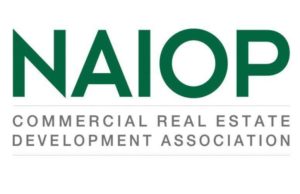
A new research brief published by the NAIOP Research Foundation reveals the reasons that tertiary markets favor local developers and why smaller industrial markets are attracting more interest from institutional investors. The survey and interviews revealed differences in the developers, investors and tenants that are active in larger and smaller markets, and why many are drawn to the potential of smaller markets. Among the findings covered in the research brief:
- Large national tenants have expanded their industrial footprints in many smaller markets, alongside the broader expansion of e-commerce distribution.
- The expansion of Amazon’s distribution network has brought large distribution centers, and Amazon’s preferred development teams, to several smaller markets.
- Cap rate compression in the largest markets appears to be leading some large investors to look further afield for industrial properties in higher yielding markets.
- Industrial real estate investment trusts (REITs) and investors that have traditionally focused on office properties have become increasingly active in smaller industrial markets.
- Respondents noted two significant advantages to developing smaller buildings in tertiary markets: shorter development approvals timelines as well as shorter acquisition, site preparation and construction schedules.
Download the full research brief, “How the Other Half Builds: Small-Scale Development in Tertiary Markets[KH1] ,” authored by Shawn Moura, Ph.D., Director of Research at NAIOP.

Commercial real estate investors are facing a critical crossroads in 2022. That is one of the key themes highlighted in Integra Realty Resources’ (IRR) newly released Viewpoint 2022. Investors continue to find a myriad of choices across a spectrum of price points, risk-adjusted returns, and geographic preferences. At the same time, investors need to tread carefully in a market where there is a convergence of complex issues, transformative change, and lingering uncertainty—all of which creates potential risk for mis-pricing assets. Given this backdrop of challenges and opportunities, the 29th annual Viewpoint report provides a detailed overview of the commercial real estate market across five key property types: office, multifamily, retail, industrial and hospitality. Viewpoint 2022 also examines trends related to the economy, housing, capital markets, interest rates and employment, and explores how these issues will affect commercial real estate markets in the year ahead. Additionally, this year’s specialty property sector analysis covers the near-term outlook for auto dealerships, golf courses and senior housing. Read or download the report HERE.
The Center for Active Design (CfAD) recently released a new report, “A Better Box,” which details a series of evidence-based guidelines for supporting better health and wellness outcomes, in particular at industrial sites. This is significant because: the North American warehouse sector’s annual growth in warehouse and storage workforce is projected at 2.7% through 2026, with a valuation of more than $87 billion; and within this enormous and growing industrial sector, in 2020 alone, the turnover rate grew to 60%; and with research showing 87% of employees consider health and wellness when choosing an employer, there is a significant disparity between what is expected in terms of quality of experience and what is being provided.


The impact of new commercial real estate development and of the ongoing operations of existing commercial real estate buildings in the United States continues to grow, according to the annual Economic Impacts of Commercial Real Estate, 2022 U.S. Edition, research study conducted by the NAIOP Research Foundation. The combined economic contributions of new commercial building development and the operations of existing commercial buildings in 2021resulted in direct expenditures of $434 billion and the following impacts on the U.S. economy: 1) Contributed $1.2 trillion to U.S. gross domestic product (GDP); 2) Generated $418.7 billion in personal earnings; and 3) Supported a total of 8.5 million jobs. According to the report, “in March and April 2020, the construction industry lost 1.1 million jobs, or 14.6% of employment; by November 2021, it added back 1 million jobs, leaving a deficit of 115,000 (1.5%) from the pre-recession peak. Texas is the #1 state in the U.S. for overall contributions to state GDP created by CRE development, creating and supporting 526,181 related jobs, generating $29.29 billion in personal earnings and contributing $75.89 billion to the state’s economy in 2021. See the full report: https://naiop.org/contributions22.

CompareTheMarket research indicates that the U.S. is the fifth most expensive country in which to rent or buy or property, with average monthly rent and mortgage prices of $1,971 and $2,328. Four European countries came in as more costly: 1) Luxembourg; 2) Switzerland; 3) Iceland; and 4) Ireland. View the research in full HERE.

Business.Org has a slew of helpful resources, each accessible at the links here: Commercial Business Loan Calculator ; How to Get A Small Business Loan ; and The Ultimate Guide to Small Business Loans. And also check out their small business reports.




